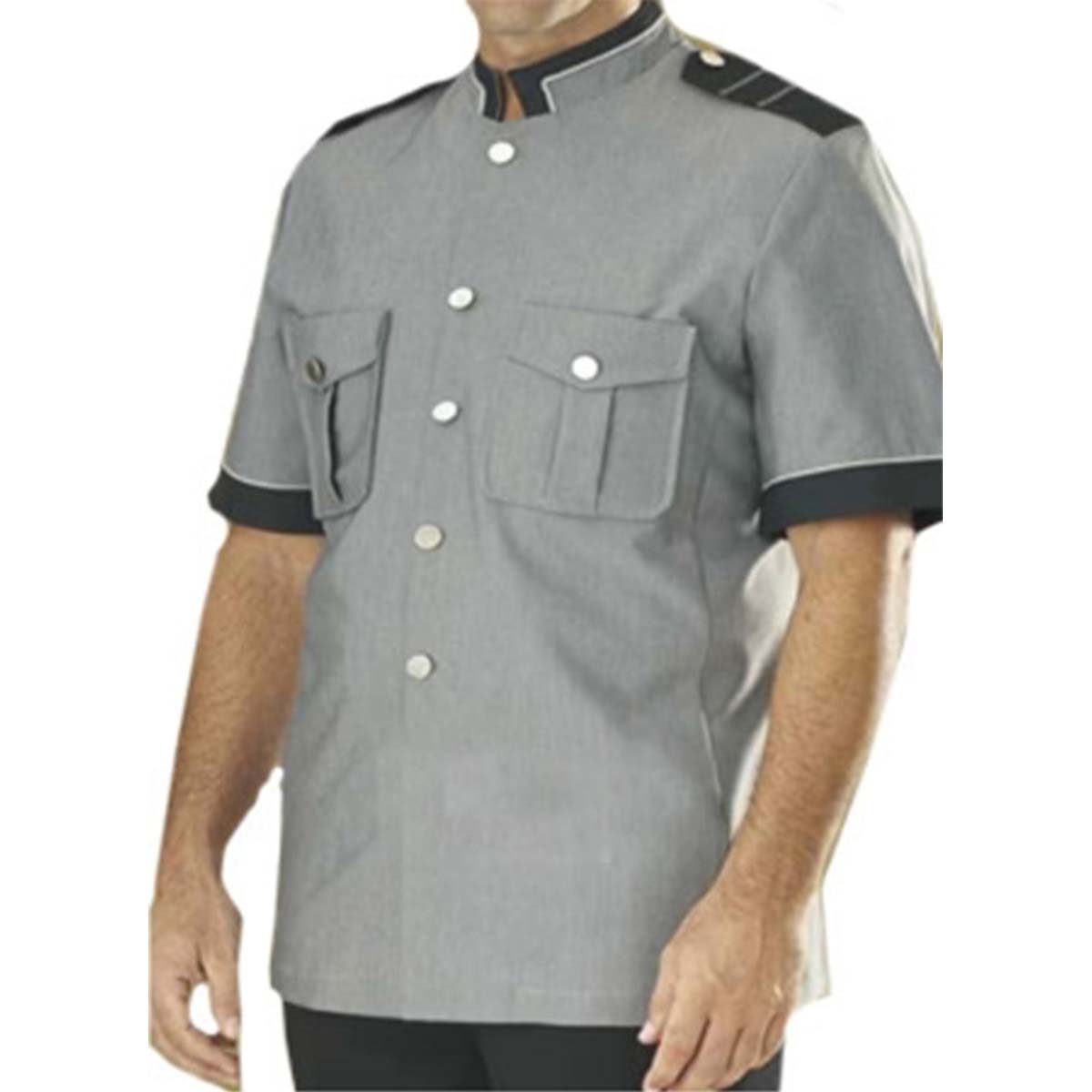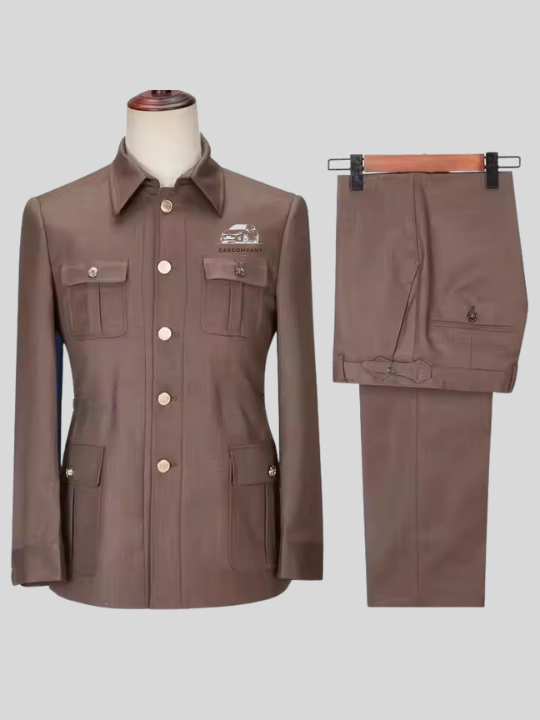Introduction
A driver uniform is more than simply a piece of clothing; it symbolizes discipline, trust, and a driver’s identity in any professional setting. A driver uniform, whether worn by a personal chauffeur, a public transport driver, a delivery worker, or a commercial truck operator, contributes to a formal and polished appearance. In today’s fast-paced and visually stimulating world, a clean and consistent uniform represents the service provider’s professionalism and inspires client confidence. The driver uniform is becoming increasingly essential in the logistics, hospitality, and public transportation industries because it establishes a distinct image and increases brand credibility. Furthermore, when drivers wear recognized uniforms, consumers and authorities can better identify them, improving security and operating clarity.
Importance of Wearing Proper Driver Uniform
In most corporate and public transportation industries, wearing a proper driver uniform is both an aesthetic and a functional need. A uniform makes it easier to identify drivers, which is especially important in high-security or fast-paced areas like airports, hotels, and hospitals. It also conveys trustworthiness and authority, which can improve the driver’s interactions with passengers or clients. A driver’s uniform is typically designed with company branding such as logos and name tags, which are important in marketing and brand representation. Additionally, wearing a uniform reminds drivers of their professional job, encouraging courteous behavior, punctuality, and accountability. A uniformed driver conveys a strong sense of consistency and quality, which clients are more likely to believe.
Key Features of a Standard Driver Uniform
A common driver uniform consists of a collared shirt, trousers, and, depending on the organization’s dress code or seasonal needs, a jacket, cap, or waistcoat. Materials utilized are often comfortable, sturdy, and breathable, allowing for lengthy driving hours in a variety of weather conditions. Cotton-blend materials, for example, are frequently favored due to their ability to absorb sweat. Depending on the nature of the task, choices for customization include embroidered names, color codes for ranks, and reflective strips for night visibility. Companies may include extras like as gloves, belts, or shoes that compliment the uniform and help the driver project a consistent appearance. The more advanced the organization, the more likely the uniform is designed to be both comfortable and professional.
Branding and uniform design for drivers
Modern businesses recognize the value of branding, and the driver uniform becomes a mobile promotional instrument. Uniforms for taxi services, food delivery platforms, and luxury travel companies are modified to represent brand colors, emblems, and even taglines. This not only helps with advertising but also fosters a sense of identity and solidarity among staff. Well-designed uniforms limit distractions and fashion-related competition, allowing drivers to focus on their jobs. Many businesses now work with expert uniform designers to create a balance between aesthetics and utility, ensuring that the uniform is appropriate for lengthy drives, changing weather, and formal occasions. When employees feel excellent in their uniforms, their morale and productivity improve.
Driver Uniforms and Safety Compliance

A critical but frequently overlooked feature of the driver’s uniform is its contribution to safety. In industries such as construction, mining, and logistics, reflective uniforms are required for visibility. High-visibility uniforms can help long-distance truckers avoid accidents, particularly when traveling at night or in poorly lighted areas. The uniform may contain components such as fluorescent vests or jackets with luminous bands to ensure that the driver is immediately seen to others on the road. Uniforms for drivers operating in dangerous environments also feature fire-resistant textiles. This focus on safety compliance through uniform design considerably decreases workplace dangers. Companies that stress uniform safety build a culture of care and accountability, which improves overall employee well-being.
Seasonal Variation and Driver Comfort
Given that drivers work in a variety of climates, their uniforms must be adaptive to seasonal variations. Light-colored, breathable fabrics are recommended in the summer, whereas woolen or thermal-lined jackets and gloves are acceptable in the winter. Raincoats or waterproof outer layers are required in areas with severe monsoons. Providing seasonally suitable clothes demonstrates the organization’s concern for driver comfort and health, which increases job satisfaction and service quality. Drivers who wear well-maintained, climate-sensitive uniforms can execute their duties without discomfort or distraction. This amount of information improves the organization’s reputation for professionalism and employee care.
Cultural and Regional Differences in Driver Uniforms
While the concept of a driver’s uniform is universal, its style and components might vary widely based on cultural and regional standards. For example, in some Asian nations, drivers for high-end clients may wear traditional tunics or formal suits, whereas in Western countries, polos and slacks are more popular for deliveries. Some regions’ government regulations require school bus drivers or public transportation workers to wear specified types or colors of uniforms. Adapting the driver uniform to local norms allows businesses to combine professionalism with cultural sensitivity. It also assures adherence to legal norms, which can vary from state to state or country to country. Culturally suitable uniforms improve the interaction between drivers and passengers, particularly in the hospitality and tourism industries.
Driver Uniforms for the Gig Economy
The development of the gig economy has altered the landscape of how we perceive the driver uniform. Independent drivers working for ride-sharing services, food delivery apps, or freelance logistics frequently do not follow a rigorous dress code. However, many businesses are now offering branded t-shirts, caps, or jackets as part of their voluntary uniform kits. This not only ensures consistency and increases client trust, but it also allows drivers to access certain privileges such as fast-lane pickups or admittance into gated areas. For gig workers, wearing a driver uniform bridges the gap between independent and corporate professionalism. It also enables businesses to gently promote their brand identity in a dispersed work environment.
The Psychological Effect of Wearing a Uniform
Wearing a driver’s uniform has a tremendous impact on an individual’s psyche. Uniforms promote discipline and pride in one’s work. They eliminate the everyday burden of deciding what to wear and establish an egalitarian work atmosphere in which drivers are evaluated based on their service, not their fashion. Psychologically, wearing a uniform makes a driver more accountable and responsible since they know they represent their organization. It promotes a stronger bond between the employee and the organization, increasing loyalty. This mental link between professionalism and look is critical to preserving service quality in a variety of industries that employ drivers.
Challenges of Implementing Uniform Policies
Despite the benefits, implementing driver consistent regulations has various problems. Some drivers may feel confined or uncomfortable in a standardized uniform, especially if the design disregards ergonomic requirements. Budget constraints may also prohibit small businesses or independent contractors from investing in high-quality uniforms. Inconsistent laundry and maintenance methods might result in an unappealing appearance, defeating the objective of the uniform. Furthermore, enforcing uniforms without considering driver feedback might lead to low morale. The approach is to involve drivers in the design process, provide seasonal flexibility, and ensure quick access to uniform sets. When drivers feel valued in decision-making, they are more likely to comply and like wearing the uniform.
Future Trends in Driver Uniform Design
The future of driver uniform design is changing as textile technology advances and people become more concerned about sustainability. Companies are looking at wrinkle-free, sweat-resistant, and even biodegradable fabrics to lessen their environmental impact. Smart uniforms with inbuilt GPS trackers or ID chips for security verification are already being tested in several logistics organizations. Fashion-forward designs are also being produced to appeal to younger, urban drivers who wish to seem fashionable while maintaining professionalism. Companies are also likely to personalize uniforms with QR codes for identification or order monitoring in the delivery industry. The combination of technology and comfort in driver uniforms is poised to change industry standards and expectations.
Conclusion
A driver’s uniform is more than just clothing; it is a symbol of identification, professionalism, and function. Driver uniforms influence service delivery in a variety of ways, including guaranteeing safety and comfort, increasing brand awareness, and building consumer trust. In a world where first impressions are important, a well-kept and well designed driver uniform can make all the difference. As industries change and expectations rise, the notion of driver uniforms will expand, combining innovation, utility, and beauty into a compelling garment.


